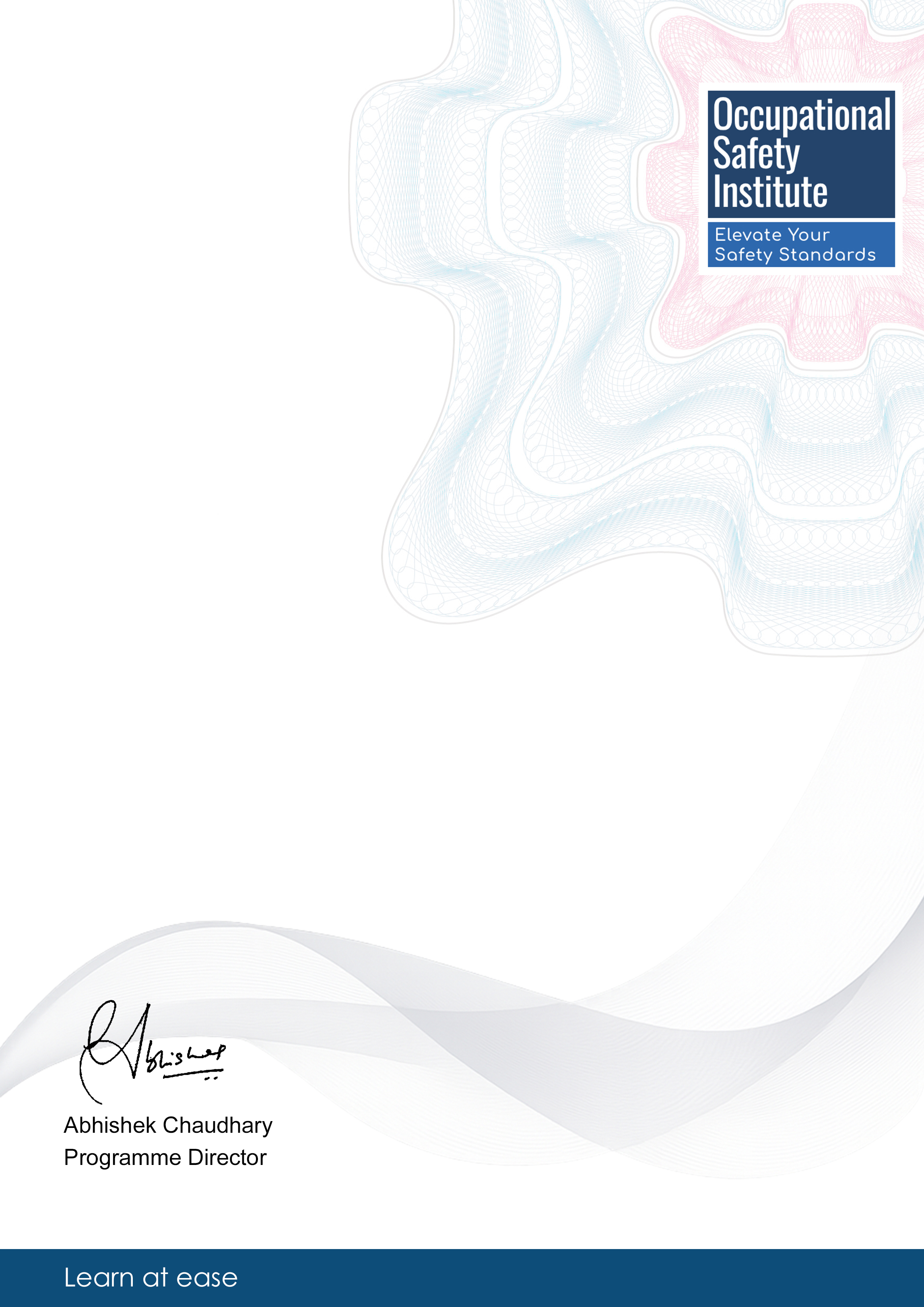Module 1: Introduction to Occupational Health and Safety Training
This module provides an overview of occupational health and safety training, its importance, and key principles.
This course is designed to provide in-depth knowledge and practical skills in occupational health and safety training, tailored for professionals in the industry. It offers a unique blend of theoretical insights and practical applications, equipping participants with the tools to enhance workplace safety and communication effectiveness.
4.9/5
|362 reviews
|1,248 students enrolled
Comprehensive, industry-recognized certification that enhances your professional credentials
Self-paced online learning with 24/7 access to course materials for maximum flexibility
Practical knowledge and skills that can be immediately applied in your workplace
This module provides an overview of occupational health and safety training, its importance, and key principles.
In this module, participants will learn how to identify workplace hazards, assess risks, and develop mitigation strategies.
This module provides you with practical frameworks and methodologies for conducting thorough risk assessments in various workplace settings. You'll learn evidence-based approaches to identify, evaluate, and prioritize potential hazards.
Effective risk assessment has been shown to reduce workplace injuries by up to 70% when implemented correctly, making this a critical skill for safety professionals.
This module focuses on communication strategies to promote safety awareness and compliance within organizations.
Participants will learn how to design and implement comprehensive health and safety training programs tailored to organizational needs.
This programme includes comprehensive study materials designed to support your learning journey and offers maximum flexibility, allowing you to study at your own pace and at a time that suits you best.
You will have access to online podcasts with expert audio commentary.
In addition, you'll benefit from student support via automatic live chat.
Assessments for the programme are conducted online through multiple-choice questions that are carefully designed to evaluate your understanding of the course content.
These assessments are time-bound, encouraging learners to think critically and manage their time effectively while demonstrating their knowledge in a structured and efficient manner.
The field of occupational health and safety offers diverse career prospects, including roles in safety management, compliance, training, and consultancy.
Professionals can progress to senior management positions, specialize in specific areas such as industrial hygiene or ergonomics, and pursue advanced certifications for career advancement.
Responsible for developing and implementing safety programs, ensuring compliance with regulations, and promoting a culture of safety.
Designs and delivers training programs on occupational health and safety topics, conducts assessments, and monitors training effectiveness.
Identifies and assesses workplace hazards, evaluates risks, and recommends control measures to prevent accidents and injuries.
Professionals in this field have access to networking events, opportunities for specialized certifications such as CSP or CIH, advanced education paths in occupational health and safety, and industry recognition for their contributions to workplace safety.
Health and Safety Coordinator
"I learned how to develop comprehensive health and safety training programs that are tailored to our organization's needs. This course has truly elevated our safety training initiatives."
Risk Management Specialist
"Implementing effective training strategies learned from this course has enabled us to create a safer working environment by effectively communicating hazards and precautionary measures."
Occupational Health Officer
"Enhancing communication skills through this course has helped me foster a stronger safety culture within our organization. I now understand how crucial effective communication is in promoting workplace safety."
Safety Training Manager
"Understanding regulatory requirements and compliance standards in-depth has been pivotal to our organization's adherence to occupational health and safety laws. This course is a must for professionals in the field."
Upon successful completion of this course, you will receive a certificate similar to the one shown below:

Undergraduate Certificate Occupational Health and Safety: Best Practices in Training and Communication
is awarded to
Student Name
Awarded: December 2025
Blockchain ID: 111111111111-eeeeee-2ddddddd-00000
Short, course-specific insights and explainer pieces related to this programme.
While some basic understanding is recommended, the course is designed to cater to participants with varying levels of experience.
The course duration is typically 12 weeks, with flexible learning options available.
Assessment will include quizzes, assignments, and a final exam, all conducted online through the learning platform.
Artificial Intelligence Solutions for Workplace Safety Compliance
This course focuses on leveraging AI technology for workpla…
Enhancing Safety Protocols with Artificial Intelligence Innovations
This course focuses on leveraging AI innovations to enhance…
Safety Measures for Retail Metrics Evaluation
This course delves into safety measures for retail metrics …
Creating Fire Safety Protocols for Workplaces
This course provides essential knowledge and skills for cre…
Disclaimer: This certificate is not intended to replace or serve as an equivalent to obtaining a formal degree or diploma. This programme is structured for professional enrichment and is offered independently of any formal accreditation framework.